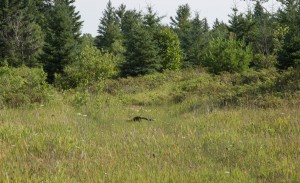Knowledgeable, passionate and ambitious are three champion terms that describe avid outdoor enthusiasts and naturalists. As a young naturalist who is continually developing new and existing skills, I have found that taking part in adventures and nature studies always pose tremendous learning opportunities. Approaching these with a positive attitude is key for personal development, but it is not always easy. Sometimes small bumps in the road can challenge you as you learn, but ultimately better you as an aspiring professional in the field of environmental conservation.
For those new to this subject, a naturalist is a person who studies and shares insight about the natural environment, contributing to the conservation of important species and ecosystems. Topics range from insect species identification to landscape interpretation to understanding dynamic human-nature relationships and beyond. Many naturalists look to their peers, colleagues and mentors for information that can help them become better experts.
[wc_row][wc_column size=”one-half” position=”first”]Sometimes relatively new members of the naturalist community can feel overwhelmed with all of this new information. Fortunately, there are notebooks, cameras and other forms of communication to assist along the way. Taking in every new opportunity and learning by doing, or “experiential learning”, is a highly valuable opportunity. Having the courage to identify a species you have never seen or heard before and finding out you were correct is very rewarding. This practice has particularly inspired me, and recently I have been working on developing my bird call identification skills. Many birds are easier to hear than see, so this is a very handy skill to develop. Practicing this skill requires repetition, so getting outside into various habitats is important.
[/wc_column][wc_column size=”one-half” position=”last”]“Ultimately, this learning
contributes greatly to
communicating the importance
of conservation issues related
to the natural environment to
future naturalists and members of
other communities in Ontario.”
[/wc_column][/wc_row]In an emerging age of technology, many resources exist to help practice your skills if you do not have the opportunity to hit the trails frequently. Smartphone apps, websites and audio files can supplement the “real deal” when seasons are not ideal for viewing certain species. Developing the listening skills required for identifying bird species is but one way that naturalists can better develop their field observation skills.

Sometimes a quick photo is all that’s possible when something catches your eye! (click the photo for a bigger version)
Chances for viewing different species of wildlife vary on the species type, the skillset of a naturalist, and sheer luck. Last month while hiking a property stewarded by the Couchiching Conservancy in Carden, Ontario, my group and I had the rare opportunity to observe a small, carnivore in the weasel family – the fisher. Solitary in behaviour, mostly active at dawn and dusk, this land mammal has the ability to hunt porcupines. At fast speeds, fishers climb trees, to heights greater than their prey. From here, they descend the trees, targeting their food from above. Yes! The fisher can run face first down trees, which means it is well adapted to forest ecosystems – and well equipped to come face-to-face with a porcupine. Our group did not witness this particular behaviour, but rather a fast bouncing and running creature in the grass. Not knowing what this animal was, we paid close attention to its side-profile features, which included a long dark tail and somewhat pointed face. Using quick, attentive observational skills, I was able to snap a few poor-quality photos, which depicted various features of the fisher. This helped later for determining the species type.
Using a variety of skills developed in the field, naturalists of all ages have the chance to apply these skills through problem solving challenges. Whether these be through listening, interpretation, or hands-on activities in the field, getting through tough moments as a naturalist is possible because passion is usually behind the efforts put forward. The fulfillment of learning new species and ecological phenomenon are a couple of great examples as to what drives members of the naturalist community to learn. Ultimately, this learning contributes greatly to communicating the importance of conservation issues related to the natural environment to future naturalists and members of other communities in Ontario.
Cameron Curran is a volunteer with The Couchiching Conservancy.

